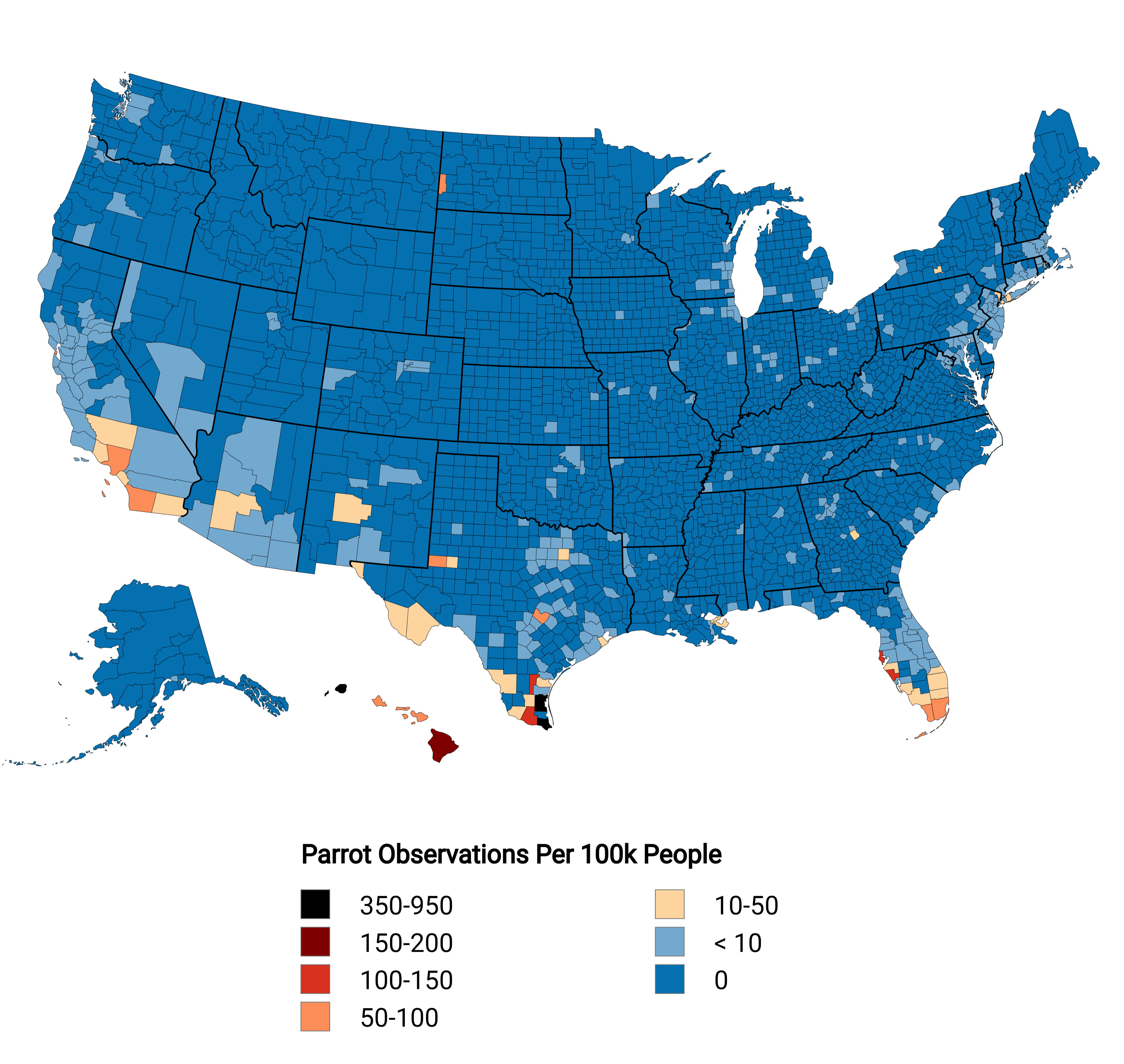Parrots in the US Map


Alex Cartwright
Senior Cartographer & GIS Specialist
Alex Cartwright is a renowned cartographer and geographic information systems specialist with over 15 years of experience in spatial analysis and data...
Geographic Analysis
What This Map Shows
The "Parrots in the US Map" provides a visual representation of parrot species distributions across the United States. It highlights the specific regions where various parrot species can be found, showcasing their habitats, populations, and even the non-native species that have established themselves in certain areas. This map is crucial for understanding the presence and movement of these vibrant birds outside their traditional tropical habitats.
Deep Dive into Parrots in the US
Parrots, known for their striking colors and intelligent behaviors, are not just confined to their native ranges in Central and South America. Interestingly, several parrot species have made the United States their home, either as escaped pets or through intentional introductions. The most notable among these are the Monk Parakeets, the Blue-crowned Conures, and the Nanday Parakeets.
Monk Parakeets, for instance, have become particularly successful in urban environments. Originally from South America, they were first spotted in the U.S. in the 1960s and have since established significant populations in cities like New York, Chicago, and Miami. Their adaptability to urban life, coupled with the availability of suitable nesting sites and food, has led to an explosion of their numbers. It's estimated that there are over 100,000 Monk Parakeets in the U.S. today.
Another fascinating species, the Blue-crowned Conure, is native to the subtropical regions of South America but has been spotted in Florida and some parts of California. Their presence is less widespread than that of the Monk Parakeets, but they can often be seen in flocks, especially in areas with abundant fruit trees.
Have you noticed that many of these parrot species thrive in warmer climates? This is primarily due to their tropical origins, which dictate their tolerance for temperatures and humidity levels. As climate change continues to reshape the environment, the habitats suitable for these birds may also shift, leading to further changes in their distribution.
Regional Analysis
When we look at the map and break down the distribution of parrots across the U.S., we see distinct regional variations. In the Southeast, particularly Florida, there is a rich diversity of parrot populations. The warm climate and lush vegetation provide an ideal habitat for species like the Monk Parakeet and the Yellow-chevroned Parakeet. Interestingly, Florida's subtropical climate has enabled these birds to form large, stable colonies, especially around urban areas where food sources are plentiful.
On the West Coast, California also hosts several parrot species, although their populations are less dense than those found in Florida. The cities of Los Angeles and San Francisco have reported sightings of Nanday Parakeets and Blue-crowned Conures, primarily in parks and gardens that mimic their native habitats.
Interestingly, the Midwest has seen some parrot populations, but they are typically less common. The colder winters pose a challenge for these birds, resulting in smaller, more transient populations. Cities like Chicago have reported sightings of Monk Parakeets, but their numbers are not as robust as in warmer regions.
Significance and Impact
The presence of parrots in the U.S. raises important ecological and conservation questions. On one hand, they add to the biodiversity of urban and suburban landscapes, providing opportunities for people to connect with wildlife. However, the introduction of non-native species can also pose risks to local ecosystems. For instance, Monk Parakeets are known to compete with native bird species for nesting sites and food, potentially disrupting local avian communities.
Furthermore, the rise of parrot populations in urban areas is reflective of broader trends in wildlife adaptation to human-modified environments. As cities continue to expand, what does it mean for other wildlife? The story of parrots serves as both a cautionary tale and a hopeful narrative of survival and adaptation.
As we consider the future of parrots in the U.S., it’s essential to monitor their populations and understand their impacts on native species. Current trends suggest that as climates warm, we might see shifts in parrot distributions, possibly leading to the establishment of new populations in areas previously unsuitable for them. This map not only illustrates where these colorful birds currently thrive but also invites us to think about how our changing environment influences wildlife dynamics.
Visualization Details
- Published
- October 27, 2025
- Views
- 16
Comments
Loading comments...